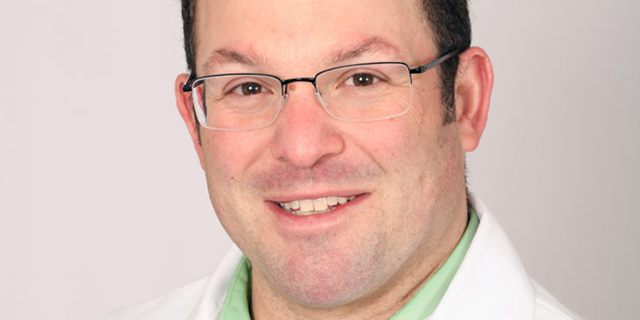Hackensack University Medical Center Orthopedic Surgeon Publishes Study Assessing the Safety and Effectiveness of Robotic Total Knee Arthroplasty Technology in the Journal Surgical Technology International
Study finds robotic knee replacement improves outcomes, reduces errors

Experts at Hackensack Meridian Hackensack University Medical Center use some of the latest robotic technology to perform robotic total knee arthroplasty (TKA), including the TSolution One® Total Knee Application created by THINK Surgical Inc.
TSolution One is an active robotic device that supports an open implant platform and CT-based preoperative planning workflow, requiring minimal surgeon intervention for making bone cuts.
Yair D. Kissin, MD, Vice Chair of the Department of Orthopedic Surgery at Hackensack University Medical Center in Hackensack, New Jersey, and Assistant Clinical Professor at Hackensack Meridian School of Medicine, recently published a research paper in Surgical Technology International titled, “Active Robotic Total Knee Arthroplasty (TKA): Initial Experience with the TSolution One® TKA System.” The paper is based on a multi-center, prospective, non-randomized trial assessing the safety and effectiveness of TSolution One for TKA.
The robot received clearance from the U.S. Food and Drug Administration in October 2019 following an Investigational Device Exemption (IDE) trial. Hackensack University Medical Center was one of only five sites in the U.S. to participate in the IDE trial, and is currently one of only a few sites with access to this innovative robotic technology. On February 10, 2020, Dr. Kissin performed the first TKA in the nation utilizing the TSolution One.
Optimizing Outcomes for Robotic TKA
The TSolution One® Total Knee Application consists of a 3D pre-surgical planning workstation and a computer-assisted tool. The pre-surgical planning allows the surgeon to design and prepare the patient’s unique joint replacement plan using a choice of implant options in a virtual environment. During the joint replacement surgery, the surgeon implements the patient’s pre-planned procedure using the active robot, which prepares the joint according to the surgeon’s plan for precise placement of implants.
“The patient satisfaction rate for traditional TKA is 82-89 percent, but one of the drawbacks of traditional TKA is the error introduced at each step,” said Dr. Kissin. “Although the error introduced in a single step may be negligible, it is possible for errors to accumulate and lead to a less-than-optimal outcome.”
The standardized approach of robotic TKA can elevate surgeon performance and reduce errors while still providing a surgical solution customized for the patient’s specific anatomy.
“It’s a well-established fact that outcomes of TKA are tied to surgeon experience and volume,” said Dr. Kissin. “TSolution One can help to optimize outcomes, even for newer or lower-volume surgeons.”
Successful TKA Case Studies
In a case study presented in the paper, surgeons used TSolution One to perform TKA on a 64-year-old male with severe osteoarthritis of the right knee.
The TSolution One provided several advantages during surgery. During the procedure, no medial soft-tissue release was needed to balance the knee. Additionally, due to bone loss on the femur, traditional cutting guides used in conventional TKA would not have had adequate bone to rest on, and therefore could have introduced error. The robotic surgical system was able to cut the bone precisely despite the bone loss.
In a second case study of a 72-year-old, active female, a severely arthritic left knee was indicated for robotic TKA. The patient had a successful robotic TKA with no need for lateral valgus soft tissue release or lateral patella release.
“Both surgical scenarios show the ability of the robot — with precise pre-surgical planning and under the guidance of the surgeon — to manage challenges, which ultimately resulted in a successful TKA,” said Dr. Kissin.
Dr. Kissin and his co-authors concluded that, although further studies are needed, the precision of robotic TKA could lead to fewer revisions, higher patient satisfaction, and improved efficiency.
